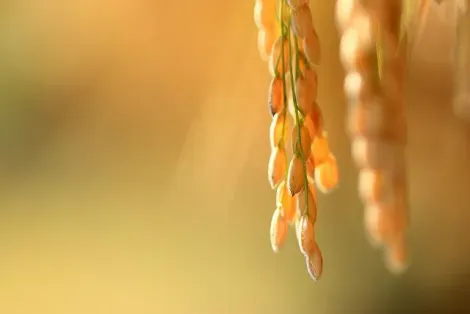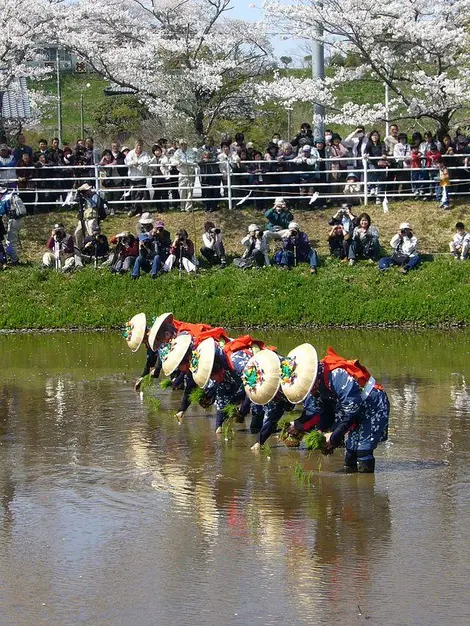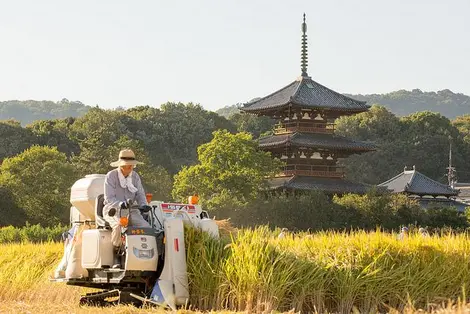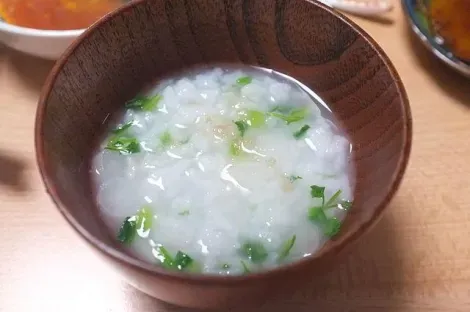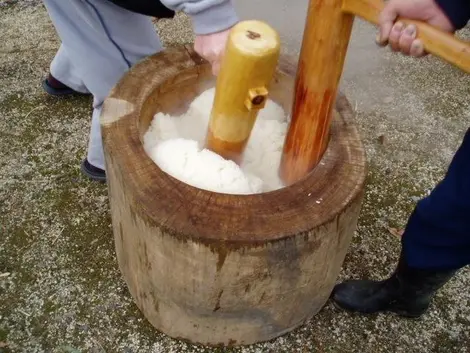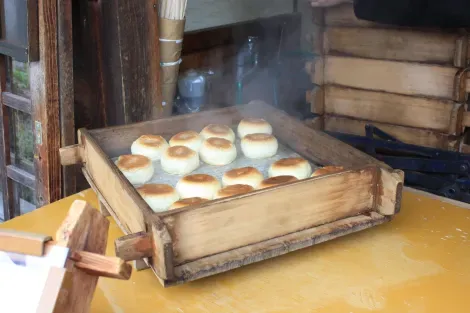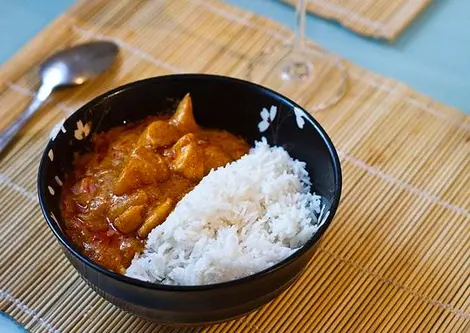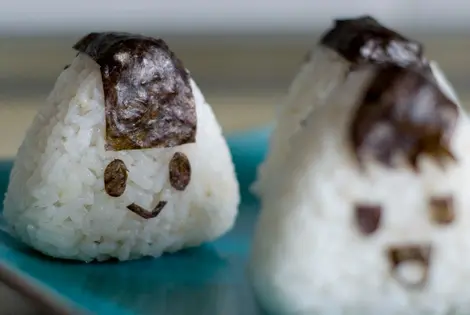Rice in Japan お米
- Published on : 07/12/2017
- by : I.D.O. / A.B.
- Youtube
History, rites and cuisine
Rice is a staple ingredient of Japanese cuisine, and has been cultivated for over 2,000 years in Japan. Look back on its history and its place in Japanese culture.
Despite its long history in Japan rice was, for a long time, a food reserved for the warriors and the nobility. It was consumed by the majority of the population only from the seventeenth century onwards, not becoming the basis of Japanese food until the early twentieth century. However, the powers that the Japanese lend to this cereal and its multiple uses make it a key food of Japanese civilization.
A tax to pay
In the past, farmers cultivated rice to pay the warrior tax (the kanji for "tax" [税] in fact features the radical designating cereals) and ate millet and barley. From the Edo Period (1603-1868), rice cultivation took off, and as the harvests became more abundant, the peasants and common people could add a little rice to their meals.
Rice and rites
The scarcity of this commodity has contributed to its importance in Japanese culture and is still given special powers today. Rice is widely used in religious rites. The Japanese, once a day before one of their meals, used to put a few grains of rice in a saucer and to make an offering to their ancestors by placing it on the Buddhist altar of the house, as a sign of gratitude. The rice is thus shared, in spirit, with their ancestors.
Party in the rice fields!
Rice fields have shaped Japanese rural landscapes and their preservation is a priority for localities and the government today. Rice planting is always done in spring/early summer, and harvesting (inekari) in fall. Each spring, the planting of the first rice plants results in traditional rituals and festivals, otaue (ota means rice, ue meaning plant).
Read more : The Otaue Rice Planting Festival
Reduced consumption
Since the end of the 1960s, rice production in Japan has been strictly regulated and generously subsidized by the Japanese government. It is almost entirely sold in the domestic market. But the vagaries of history and the lifestyle change of the Japanese population have resulted in a drop in rice consumption of more than 50% in 40 years. According to a recent study, the Japanese are the 50th biggest rice consumers, with a daily average of 119 grams per inhabitant.
Rice in the language
In the Japanese language, three different words refer to rice. Ine 稲 when grown in rice fields; o-kome お米 for the harvested rice - the kanji 米 enters into the composition of the old character 氣: ki , vital energy; and finally gohan ご飯 (or meshi ) for the cooked rice that we consume. Rice is so important in Japan that the word gohan also means meal. Adding the words meaning morning, noon and night (asa, hiru, ban) before gohan, means breakfast, lunch and dinner respectively. Breakfast is literally "morning rice", and so on.
See also: Breakfast in Japan
Some Japanese will tell you that they don't feel like they're eating a real meal if there is no gohan! In some Buddhist temples, it's required that rice be part of the monks' breakfast.
Different varieties
Japanese rice (from its scientific name oryza sativa japonica ) is a round grain variety. It's divided into two broad categories, koshihikari and sasanishiki, grown in different parts of Japan. The uruchi variety, with longer grains, is used for sushi. There are more than a hundred kinds of rice in Japan. Remember one: hitomebore. It means "love at first sight" ...
For all tastes
The Japanese mostly consume white rice (hakumai), and occasionally brown rice (genmai), which has retained its bran and germ. Genmai is chewer and has a higher nutritional value thanks to the fiber, vitamins and minerals it contains. The Japanese eat plain and unseasoned rice, as it serves as an accompaniment to the various already salty dishes that make up a traditional Japanese meal - vegetables, fish or meat, and soup. Some exceptions: mixed with vegetables for example, it's called maze gohan. Served alongside curry sauce, this is the very popular kare raisu, curry rice. Fried with egg, vegetables and meat, it's known as chahan, or Cantonese rice. And shaped into a triangle with a filling of fish or a dried plum, it's of course an onigiri, a handy snack to eat on the run. Rice takes a thousand and one forms in Japanese cuisine.
The art of eating rice
A golden rule: don't pour soy sauce into your rice in Japan! You'll get incredulous looks. The Japanese find subtle flavor in their rice that Westerners have a harder time appreciating. And when you eat sushi, again, dip the fish, not the rice, into the sauce. Another thing to avoid is sticking your chopsticks into your bowl of rice vertically - it's a gesture reserved for Buddhist funeral rites. Just balance your chopsticks on the side of your bowl or plate.
Uses
Finally, rice is used in the manufacture of vinegar (komezu), sake, mirin (sweet alcohol used in cooking) or crackers called senbei. It's also one of the components of miso paste, an essential ingredient in Japanese cuisine. Mochigome or glutinous rice is used for making mochi, traditional rice cakes.
More than just a cereal, rice is an essential food in Japanese cuisine and culture.









